Caffeine
CAS number: 58-08-2
Caffeine is a drug of the methylxanthine class used for a variety of purposes, including certain respiratory conditions of the premature newborn, pain relief, and to combat drowsiness. Caffeine is similar in chemical structure to [Theophylline] and [Theobromine]. It can be sourced from coffee beans, but also occurs naturally in various teas and cacao beans, which are different than coffee beans. Caffeine is also used in a variety of cosmetic products and can be administered topically, orally, by inhalation, or by injection. The caffeine citrate injection, used for apnea of the premature newborn, was initially approved by the FDA in 1999. According to an article from 2017, more than 15 million babies are born prematurely worldwide. This correlates to about 1 in 10 births. Premature birth can lead to apnea and bronchopulmonary dysplasia, a condition that interferes with lung development and may eventually cause asthma or early onset emphysema in those born prematurely. Caffeine is beneficial in preventing and treating apnea and bronchopulmonary dysplasia in newborns, improving the quality of life of premature infants.
Related images
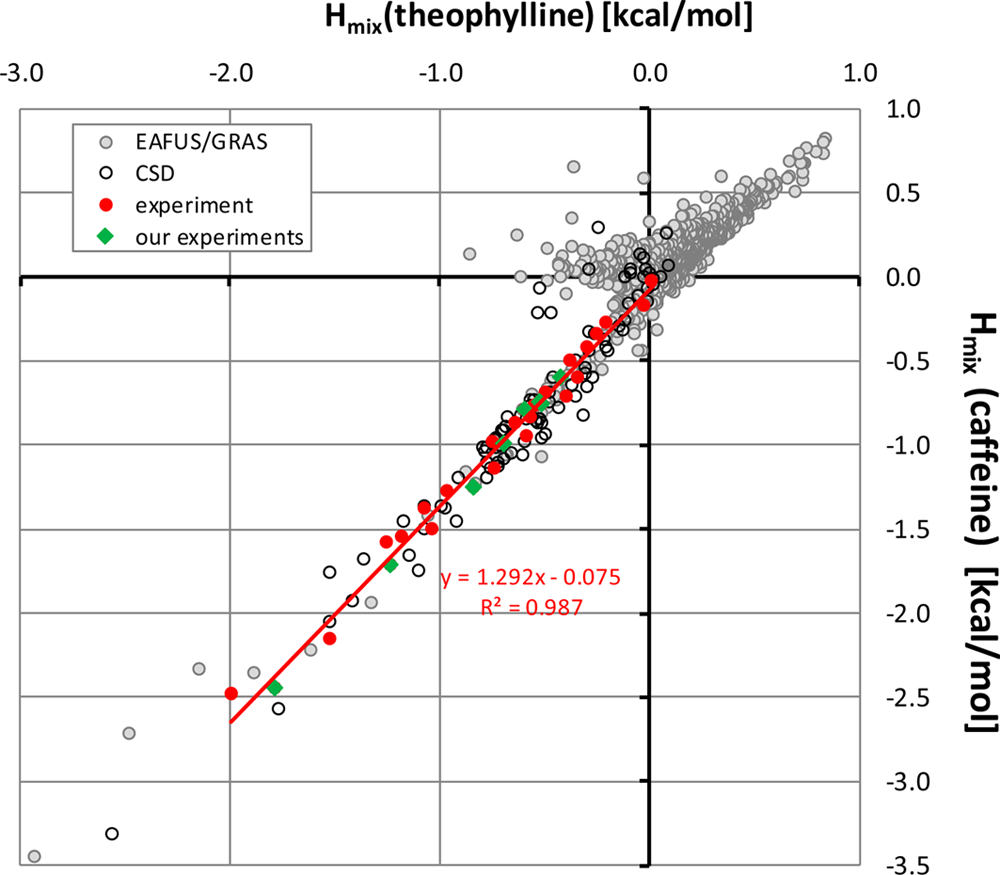
Correlation between mixing enthalpies of caffeine and theophylline. The four series corresponds to different sets of coformers mixed in the liquid state under supercooled conditions.
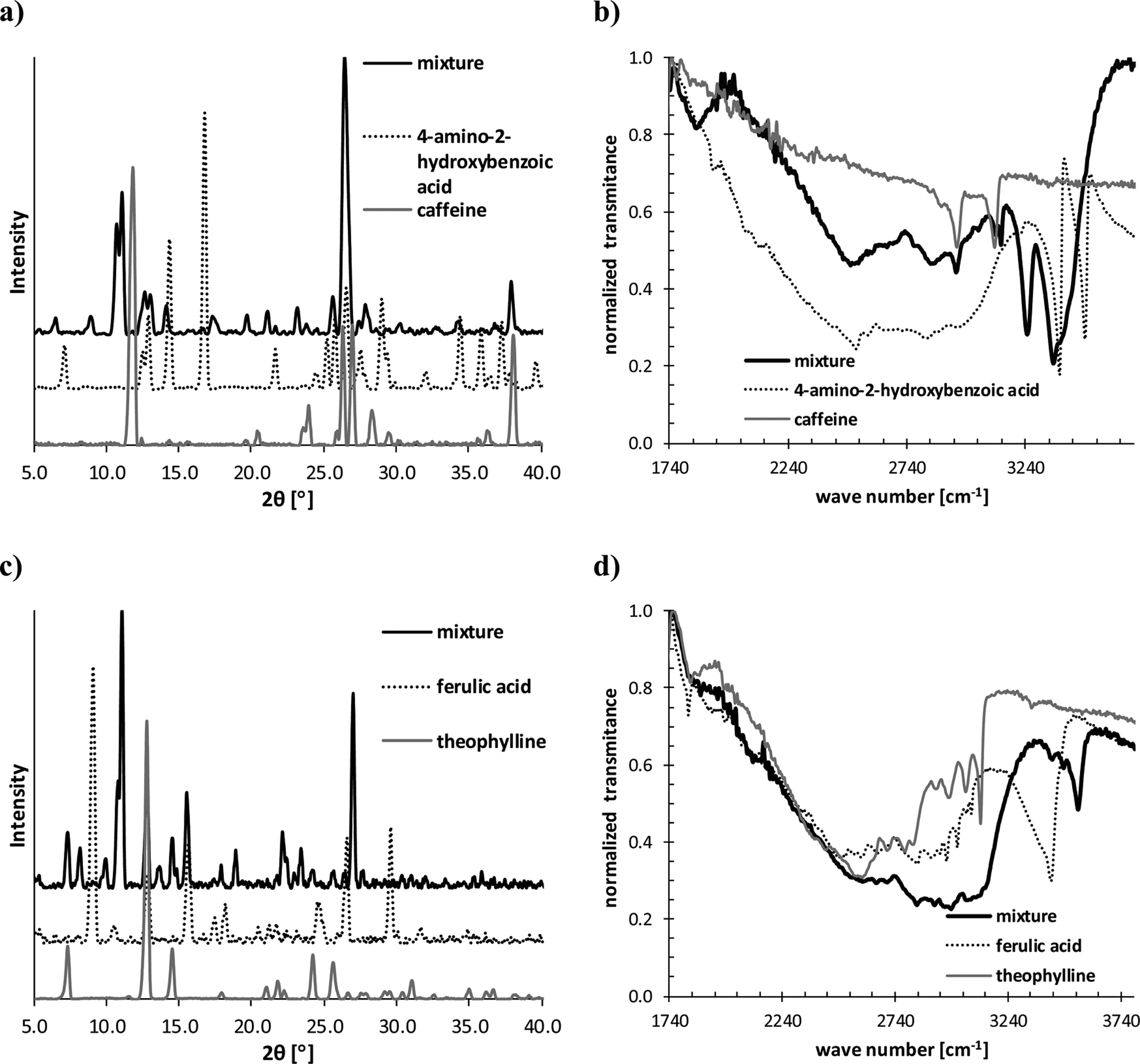
PXRD and FTIR spectra recorded for 1:1 caffeine/4-amino-2-hydroxybenzoic acid mixture (a, b) and 1:1 theophylline/ferulic acid mixture (c, d) obtained via liquid-assisted grinding.
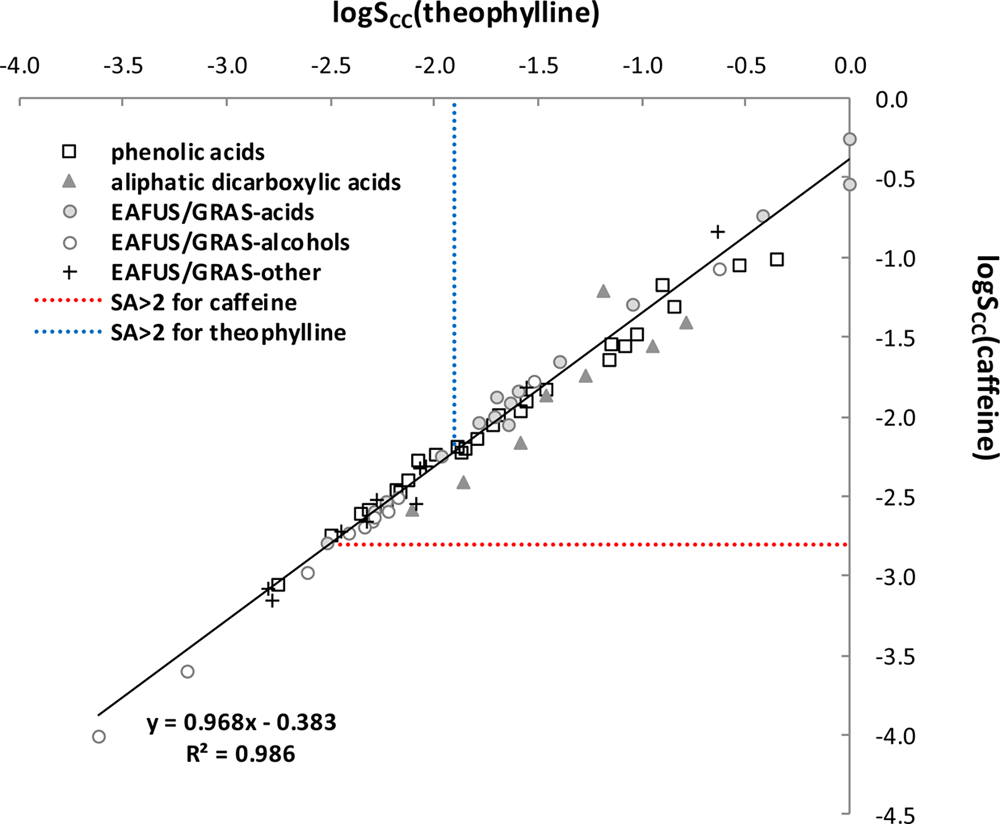
Correlation between estimated solubility values of caffeine and theophylline in the case of cocrystallization with the same coformers in a 1:1 stoichiometry.
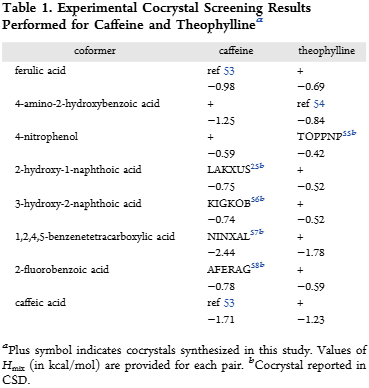
Experimental Cocrystal Screening Results Performed for Caffeine and Theophylline
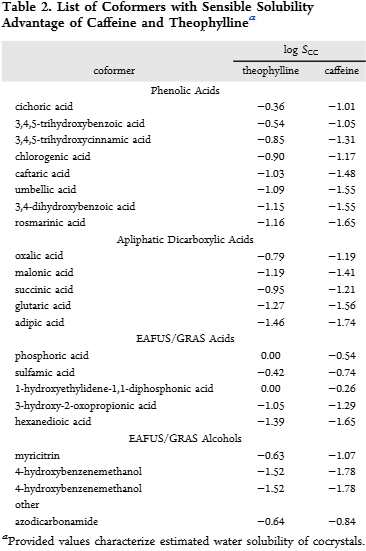
List of Coformers with Sensible Solubility Advantage of Caffeine and Theophylline
Related Questions and Answers
A: Caffeinated chewing gum achieves faster absorption (5–10 min) and higher bioavailability compared to capsules, making it more practical for acute pre-exercise supplementation. This allows ergogenic effects to manifest within the 5-min chewing period, optimizing performance timing.
A: At 4 mg/kg, caffeinated chewing gum caused no significant side effects beyond increased perception of performance improvement and vigor. Only transient side effects (e.g., tachycardia in 31.25% of participants) and increased urine output were reported, with no headaches or gastrointestinal distress.
A: Caffeinated chewing gum improved 1RM in back squat (+5.0%) but not in bench press (p > 0.05). Similarly, muscular power improvements were larger in back squat (effect sizes: d = 0.54–0.86) than bench press (d = 0.25–0.62), suggesting caffeine’s effects are more pronounced in larger muscle groups due to enhanced neural drive.
A: A dose of 4 mg/kg caffeine in chewing gum (chewed for 5 min) significantly improved maximal strength (1RM) and muscular power (25–90% 1RM) in the back squat and muscular power (25–75% 1RM) in the bench press, with minimal side effects.
A: Caffeine enhances resistance exercise performance by increasing central nervous system excitability, recruiting more fast-twitch (type II) muscle fibers, and improving motor unit recruitment. This is evidenced by elevated mean frequency (MF) and median frequency (MDF) in prime movers (e.g., vastus medialis, pectoralis major) and increased normalized root mean square (RMS) activity in muscles like the gluteus maximus.